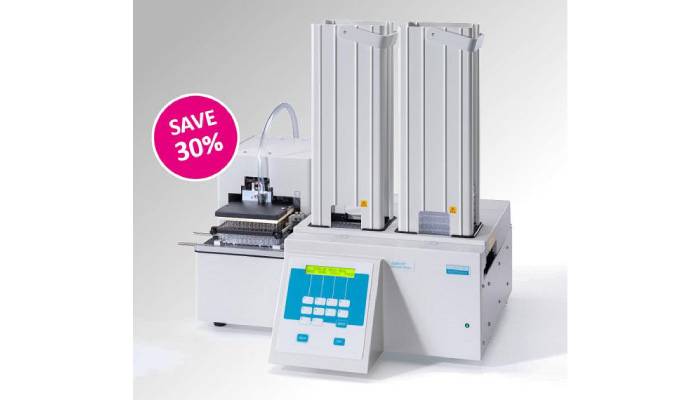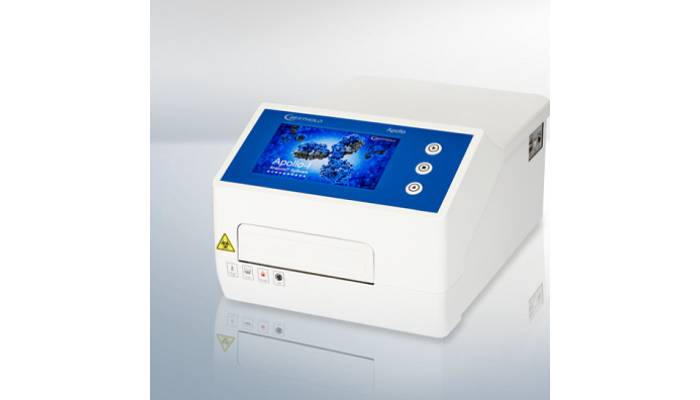
When choosing an ELISA plate washer, there are several key features to consider. First, an automated washing process greatly enhances accuracy, ensuring that all unbound reagents are effectively removed. Secondly, having programmable wash cycles lets you tailor the washing parameters like volume and pressure for different assays. This can be pretty handy! High throughput capability is also vital; a washer that can manage multiple plates boosts efficiency in busy labs. Furthermore, it’s essential to minimize contamination risks; automated systems do this well by reducing manual handling. Lastly, ease of maintenance is important—keeping your equipment clean helps guarantee consistent results over time.
1. Automated Washing Process Enhancements
An ELISA plate washer with an automated washing process is a game-changer for laboratories. It ensures that unbound reagents and contaminants are efficiently eliminated, leading to increased reproducibility of results across multiple tests. By reducing the chances of human error during washing steps, these devices enhance the overall accuracy of the assays. Many modern washers integrate seamlessly with laboratory information management systems (LIMS), making data tracking a breeze.
Programmable settings for different plate types and sizes allow labs to customize their washing protocols, ensuring optimal performance for various assays. Real-time monitoring during wash cycles also adds a layer of quality control, helping technicians maintain high standards. Plus, a user-friendly interface simplifies operation, even for those who may not be technically savvy.
Automatic detection of wash buffer levels prevents interruptions during the washing process, ensuring a smooth workflow. These washers can also store multiple washing protocols, making it easy to switch between different assays as needed. Compatibility with various ELISA plate formats, such as 96-well and 384-well plates, adds to their versatility. Ultimately, improved wash efficiency leads to less reagent consumption, benefiting both the lab budget and the environment.

2. Customizable Programmable Wash Cycles
Customizable programmable wash cycles are essential for adapting the washing process to specific assays. Look for a plate washer that allows you to set various washing parameters, such as wash cycle speeds and buffer volumes. This flexibility is particularly useful when working with different sample types or assay conditions. Additionally, the ability to incorporate rinse and soak steps can enhance the overall effectiveness of the washing process.
User-defined protocols that can be saved and easily retrieved streamline workflow, allowing labs to save time and ensure consistency across tests. Many washers also come with pre-programmed templates for common assays, making it even easier to get started. Furthermore, having adjustment features for optimizing wash cycles based on sample type can lead to improved assay sensitivity and reliability.
Some advanced models include feedback mechanisms that adjust cycles based on assay performance, which can help refine processes over time. Integration with software for further customization and tracking provides an added layer of control, allowing labs to monitor performance and make data-driven decisions. Additionally, the ability to schedule wash cycles for overnight or off-hours processing maximizes laboratory efficiency. Support for multi-step wash processes is another feature that can significantly enhance assay outcomes.
3. High Throughput for Busy Labs
For laboratories that handle a significant number of samples, high throughput is a critical feature in an ELISA plate washer. These washers can process multiple plates in a single cycle, drastically cutting down the time needed for testing. Automated loading and unloading features streamline the workflow, allowing technicians to focus on other tasks rather than manually handling each plate. Batch processing capabilities enable labs to tackle large volumes of samples efficiently, which is essential during peak testing periods.
Real-time tracking of multiple plates helps in managing time effectively, ensuring that no samples are overlooked. The reduction of manual intervention not only enhances efficiency but also frees up valuable staff time, allowing for better resource allocation. Furthermore, efficient buffer management minimizes waste, reducing operational costs in the long run.
4. Minimizing Contamination Risks
Minimizing contamination risks in an ELISA plate washer is essential for ensuring accurate and reliable results. Look for closed systems that limit exposure to the environment during the washing process. These systems help reduce the risk of external contaminants affecting assay outcomes. Automated handling is another key feature, as it decreases the chances of operator-induced contamination. For instance, if a technician manually handles plates, there’s a higher likelihood of introducing errors.
Using high-quality materials that resist chemical degradation is also vital. This not only prolongs the equipment’s life but ensures that no residues interfere with the assays. Regular calibration checks are necessary to maintain consistent performance, ensuring that the washer operates correctly over time.
Incorporating sterilization methods, like UV light for wash buffers, can provide an extra layer of protection against microbial contamination. Additionally, consider washers that include disposable components to prevent cross-contamination between assays. These components can be particularly useful in preventing carryover from one test to another.
5. Simple Maintenance for Longevity
When choosing an ELISA plate washer, consider its design for easy maintenance. A model that allows quick access to critical components makes cleaning straightforward, ensuring that you can keep the equipment in top shape without hassle. Look for clear guidelines on maintenance schedules to help you stay on track with routine care. Modular components are a plus, as they can be replaced without needing specialized tools, minimizing downtime. Some washers come with built-in diagnostics, helping you identify problems before they escalate. Comprehensive user manuals should offer troubleshooting tips and maintenance advice, empowering you to address minor issues yourself. Additionally, support for remote monitoring and maintenance alerts can make it easier to manage upkeep. High-quality construction reduces wear and tear over time, extending the washer’s lifespan. Compatibility with maintenance contracts can also be a wise choice for long-term care. Lastly, ensure that spare parts are readily available to facilitate quick repairs, and consider training programs that help users understand the maintenance needs of the equipment.